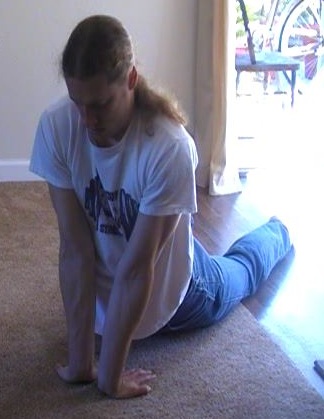One of the most useful things to do in any training is to look at what your weaknesses are. When it comes to most hand balancing and acrobatics, this can be split up into three main areas.
Strength – Let’s face it. Most moves take strength to be able to do and without it you won’t have a chance of doing them.
Skill – Another obvious one. It takes skill which is built up through practice to do anything requiring balance or aerial coordination.
Flexibility – Many people, especially men, don’t want to face this one. Sometimes all you need is to be more flexible.
In certain cases, you can make up for a lack of one, with another. For instance, let’s take the aerial. If you don’t know what that is, think of a no handed cartwheel. A lot of women in gymnastics easily work up to this movement. Why? Two words…
Hip Flexibility.
What is the one area that most men don’t have much flexibility in? Yeah, the hips (myself included but I’m working on it).
Sure, with more power, you can lift yourself higher and accomplish the aerial. I’ve been there. But if you just open up your hips it becomes almost effortless.
What stops many people in doing handstands? Wrist pain. What helps to cause that? Lack of wrist flexibility. (Been there too)
All the skill in the world won’t help you if you’re in pain and can’t even hold the right position because of it.
When it comes to bridging movements, what stops people? Is it lack of strength or skill? Almost never, but instead it is flexibility. (Believe it or not, the first time I did a hand bridge my back was pretty much straight!)
Of course along with that is having strength in those flexible ranges, and proper stretching will build that too.
With the proper flexibility certain moves become effortless. And that’s what we all want right? Not just being able to muscle our way through a move, but show an ease and grace while doing it, that makes other people go “wow you make it look so easy.”
That’s the idea behind Focused Flexibility. To specifically work on what you need. It’s not some generic stretching program, but is structured to give you what you need.
Tons of people have picked up this new course based on my recommendation. Won’t you join them?












